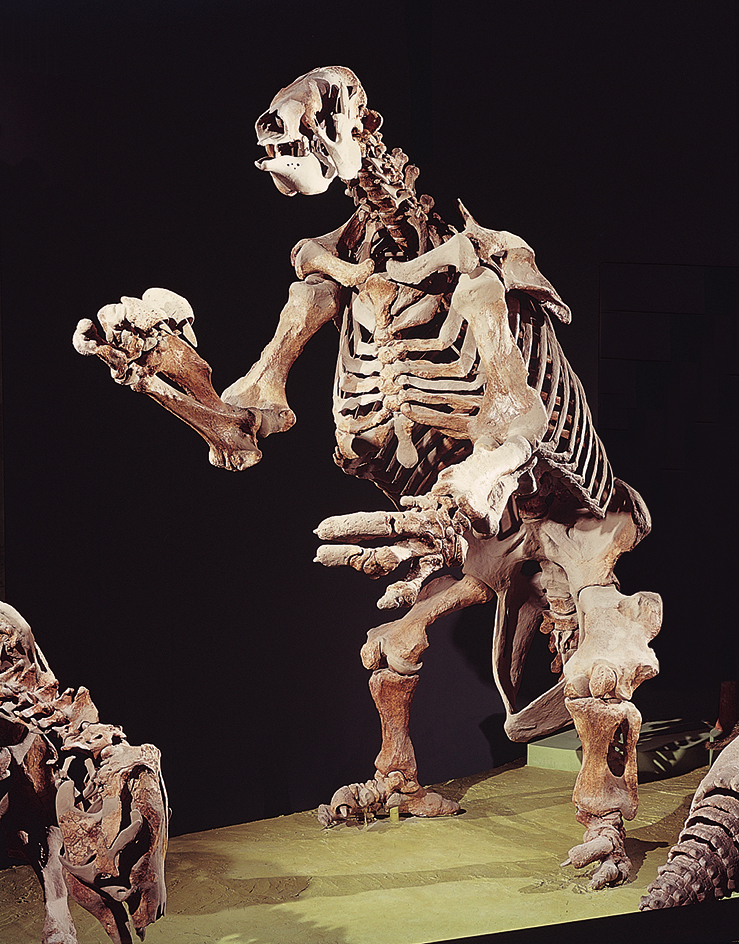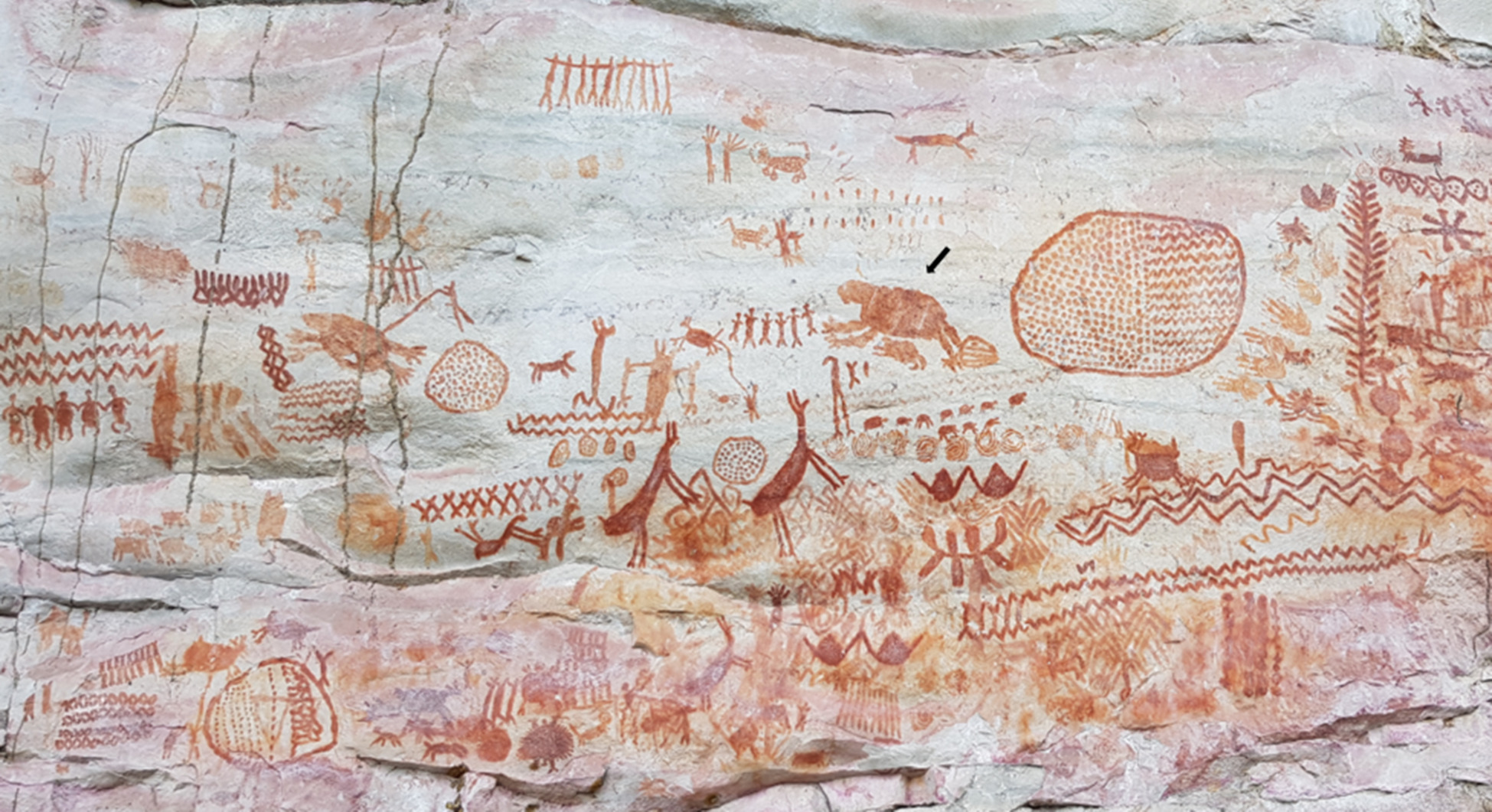Ground sloth, sometimes called the giant sloth, is a huge, extinct mammal related to modern sloths. The largest ground sloth was about 20 feet (6 meters) long. It was as large as an elephant. It had huge bones, heavy back legs, and a strong tail. This indicates that the ground sloth could stand on its hind legs to reach high branches and leaves. It ate only plants. Unlike present-day sloths, it did not climb trees.

The front feet of the ground sloth had long claws. The claws were placed so that the animal must have walked on its knuckles, with only the outer edge of the foot on the ground. The ancestors of the ground sloths lived in trees and used their hooked claws to hang from the branches.
Ground sloths originally lived in South America. By the end of the most recent ice age, about 11,500 years ago, these animals lived in what is now the United States. Their remains can be found with those of prehistoric people. See Great American interchange.
Thomas Jefferson collected fossil bones of a ground sloth from a limestone cave in what is now Monroe County, West Virginia, in 1797. West Virginia designated Jefferson’s ground sloth as the official state fossil in 2008. 
